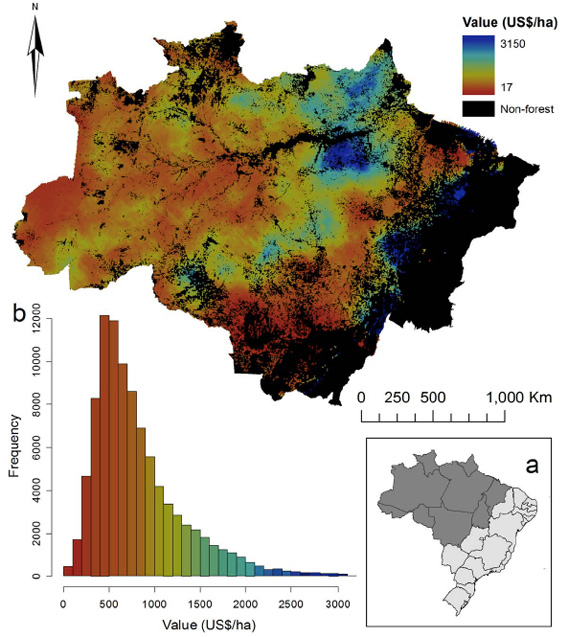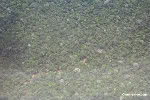A new model aims to forecast future logging road development by estimating the value of timber stocks across the Brazilian Amazon. The research, published in PLoS One, could help prioritize areas for conservation to protect the maximum area of forest.
Sadia Ahmed and Robert Ewers Imperial College London used data on tree species distribution and price information on commercially valuable timber to develop the model. In aggregate, the areas with the highest value timber were in the northeastern and southeastern parts of the Brazilian Amazon, regions where forest is more easily exploited. The southwestern and western Amazon had the least valuable timber stocks, according to the model.
The findings are noteworthy because most road development in the Brazilian Amazon is the product of logging and logging roads are linked to subsequent deforestation. A separate study, published in 2006 by Greg Asner of the Carnegie Institution’s Department of Global Ecology at Stanford University, found that logged areas near roads were two to four times more likely to be deforested than intact forests.
Ahmed and Ewers believe their model could help forecast future road developments, providing an opportunity for conservationists to target high risk areas before construction begins, reducing both logging and deforestation.

Map of timber value in the Amazon. Values range from low (US$17 per ha) to high (US$3150 per ha). Insets: (a) dark shading shows the spatial extent of the Brazilian Amazon within Brazil, including the state boundaries; (b) frequency distribution of timber values (US$/ha) in the Brazilian Amazon, calculated over 151,073,784 equal-area grid squares of area 0.25 sq km. Image and caption courtesy of the authors.
CITATION: Sadia Ahmed and Robert Ewers (2012). Spatial Pattern of Standing Timber Value across the Brazilian Amazon. PLoS ONE 7(5): e36099. doi:10.1371/journal.pone.0036099
Related articles
Researchers launch tool that predicts Amazon deforestation a year before it happens
(03/30/2012) Researchers have developed a methodology for accurately predicting where deforestation will occur in the Amazon up to a year in advance, enabling law enforcement agencies and officials to take preventative action before trees are actually chopped down, a forestry expert told mongabay.com on the sidelines of the Skoll World Forum for Social Entrepreneurship.
Selective logging occurs in 28 percent of world’s rainforests

(01/13/2009) New satellite research presented for the first time at a symposium entitled “Will the rainforests survive?” showed that selective logging is impacting over a quarter of the world’s rainforests. Gregory Asner from the Carnegie Institution presented the “first true global estimate of selective logging” which showed that 5.5 million square kilometers of the rainforest has already seen selective logging or is slated to be logged in the near future.
Selective logging leads to clear-cutting in the Amazon rainforest
(07/31/2006) A new study links selective logging to clear-cutting in the Amazon rainforest. The research is significant because it identifies an important indicator of rain forest vulnerability to clear-cutting in Brazil.







